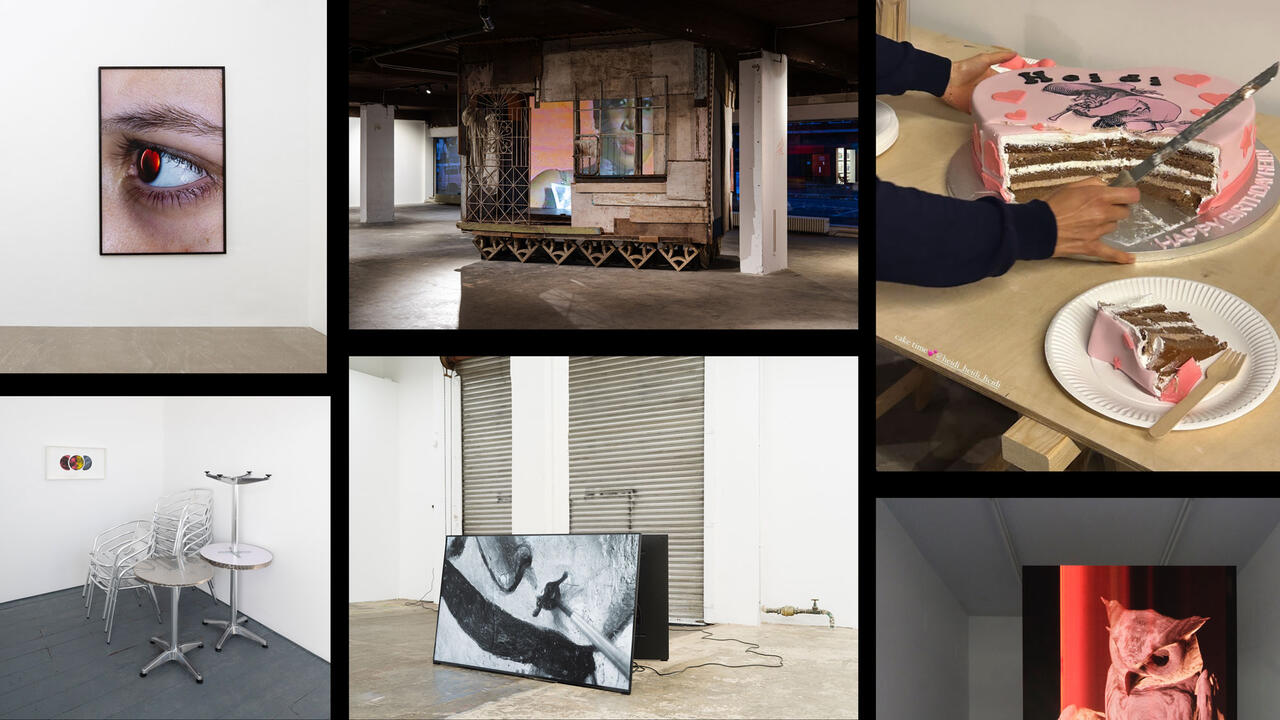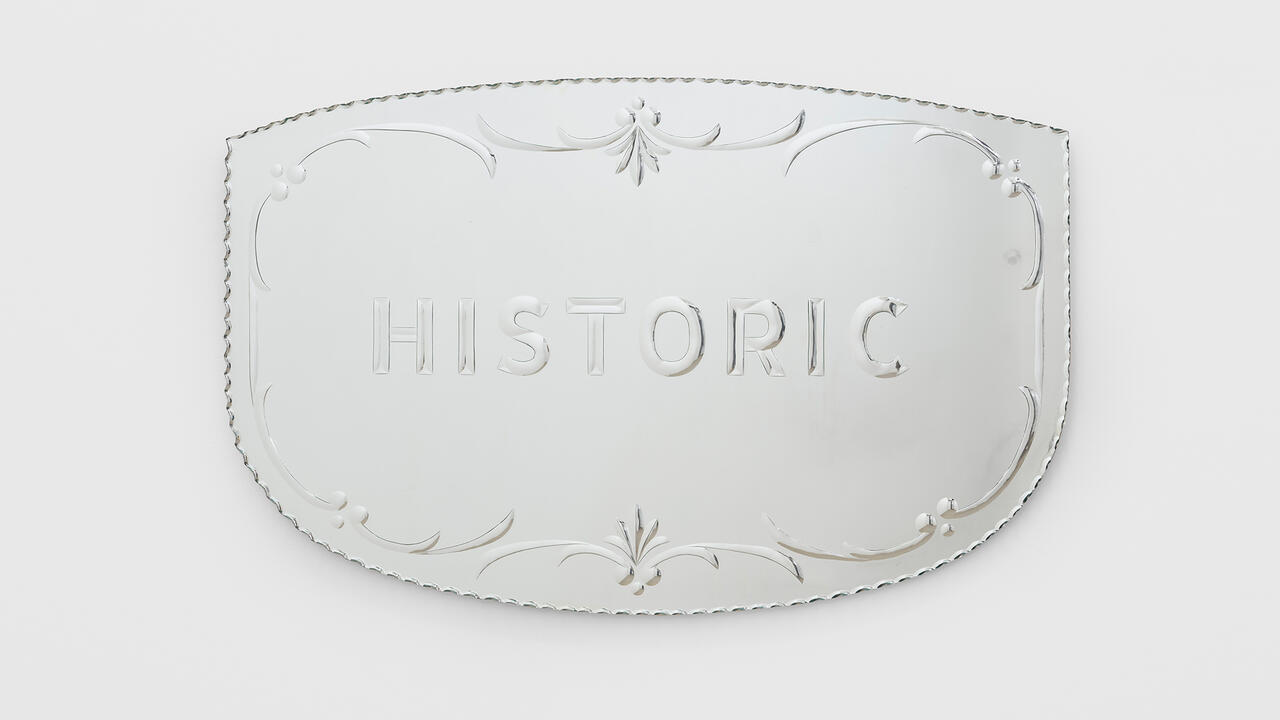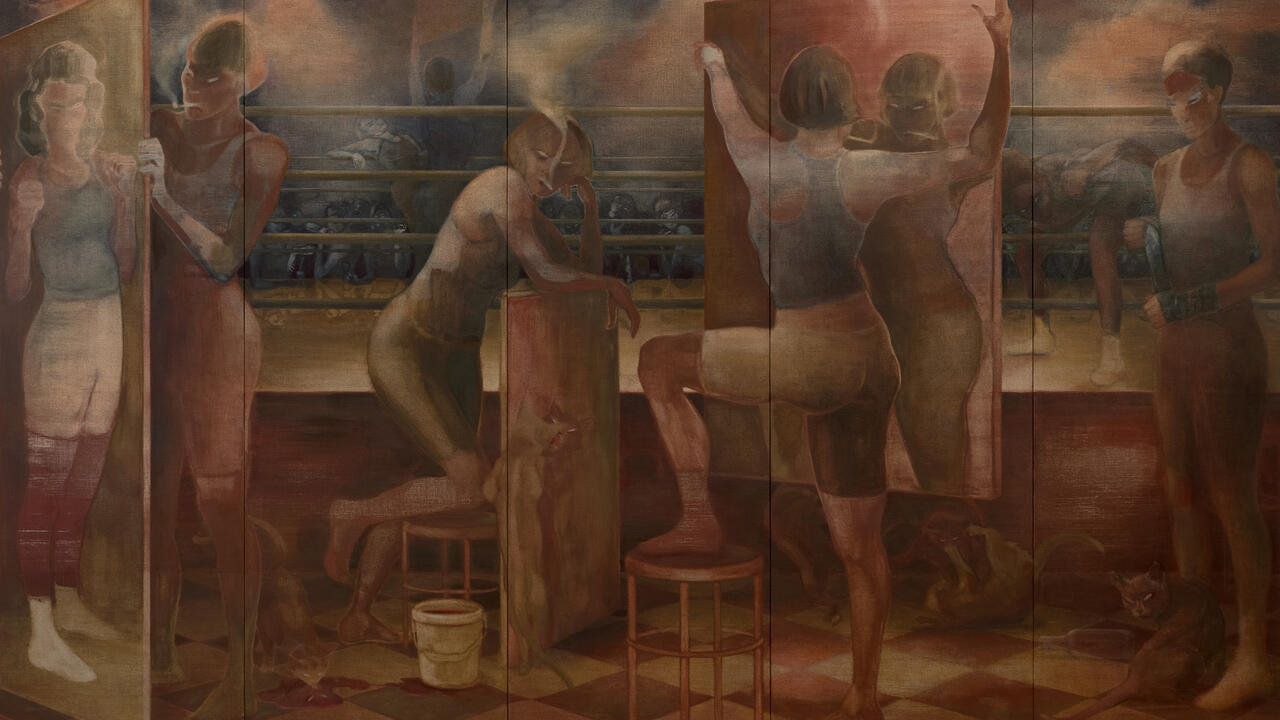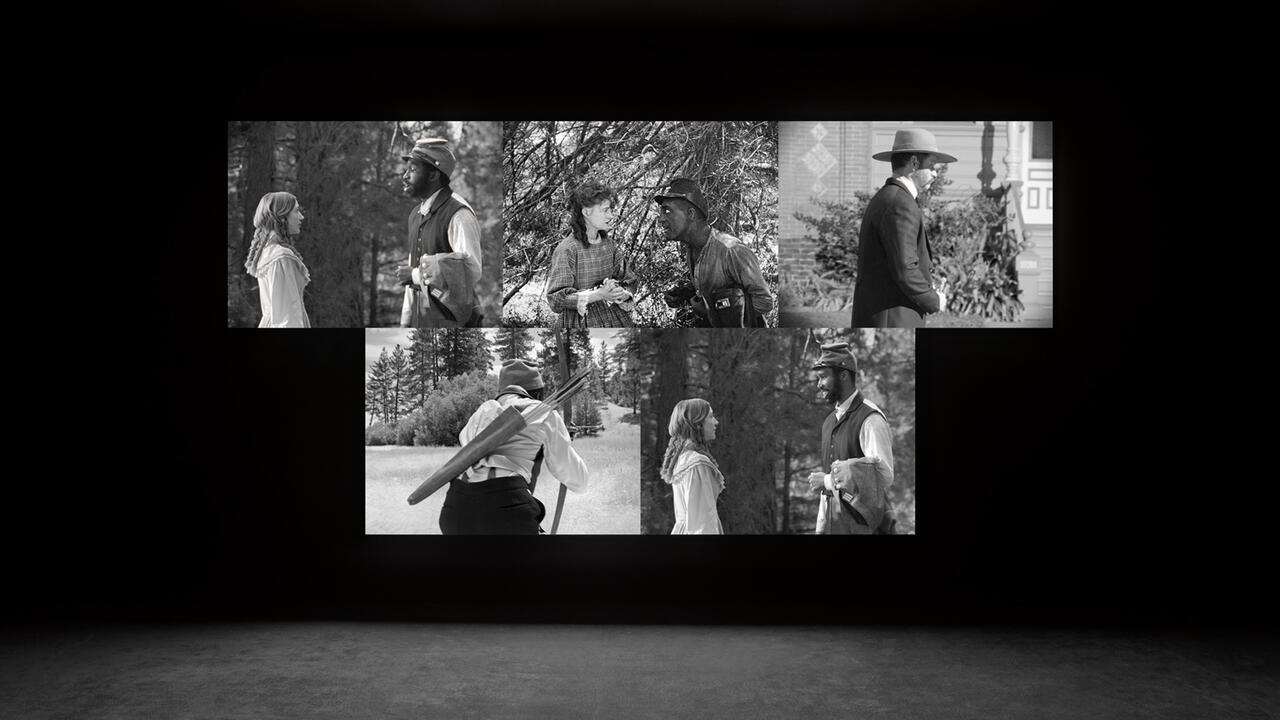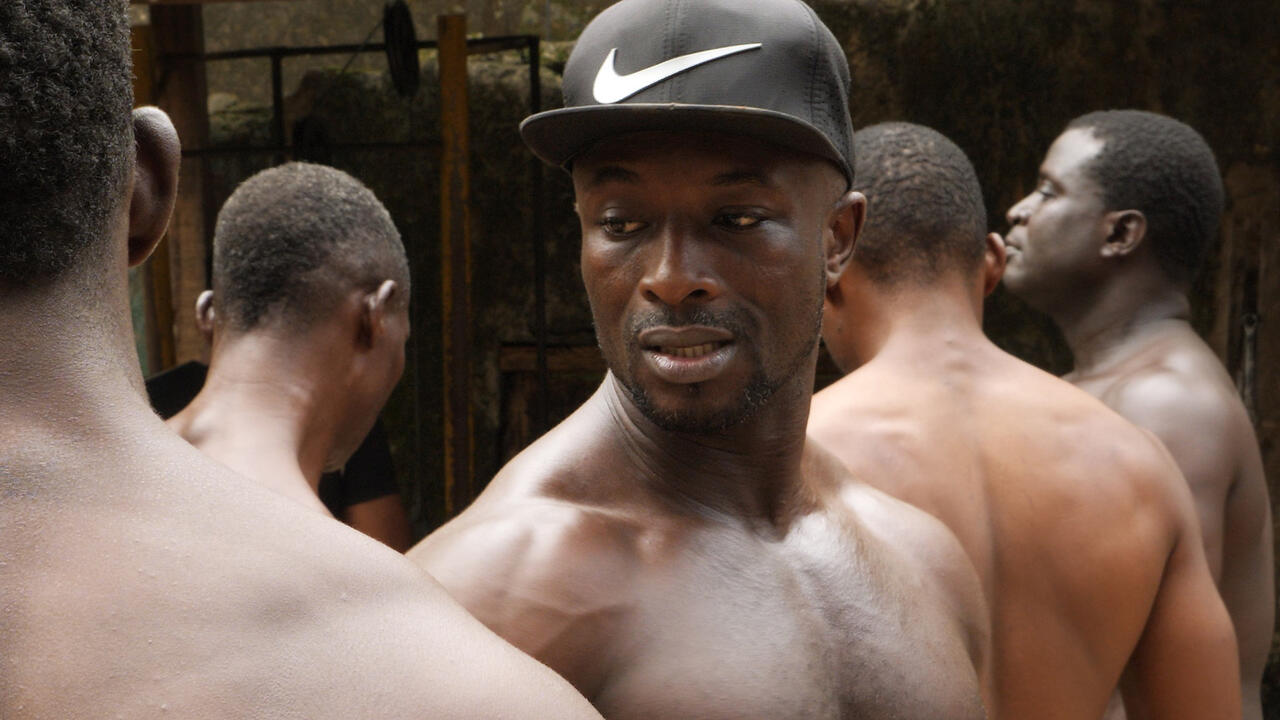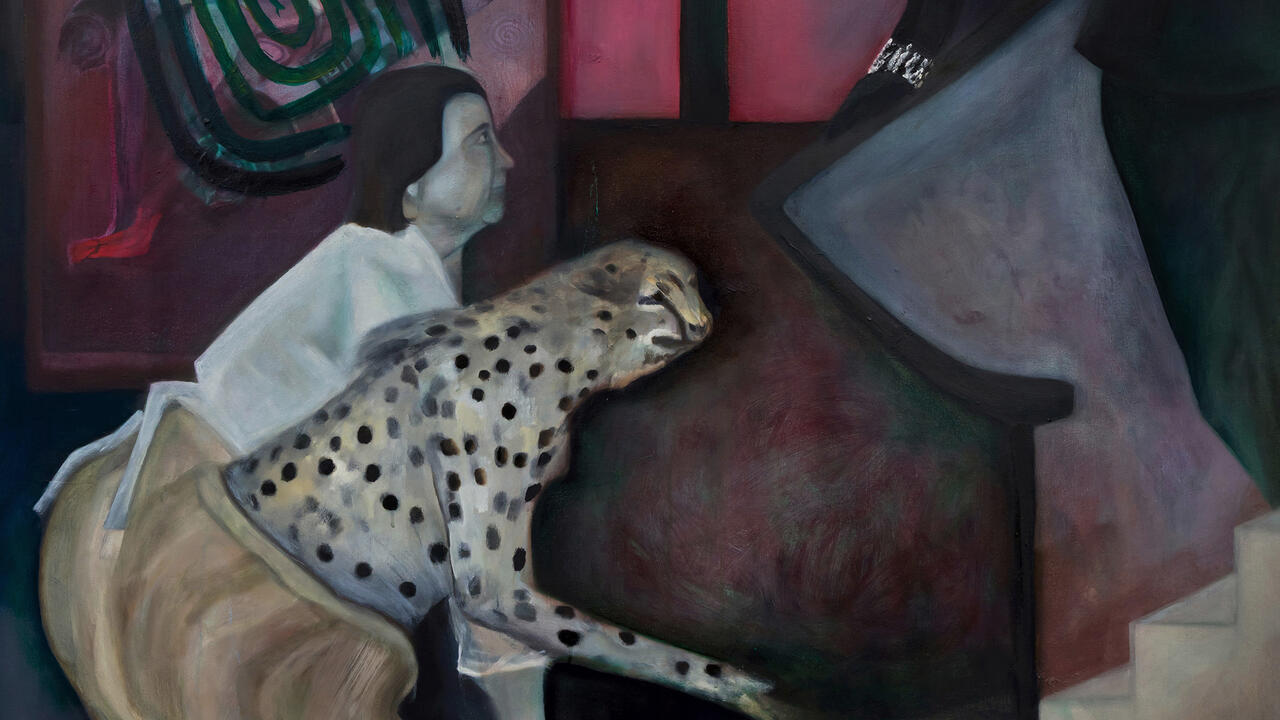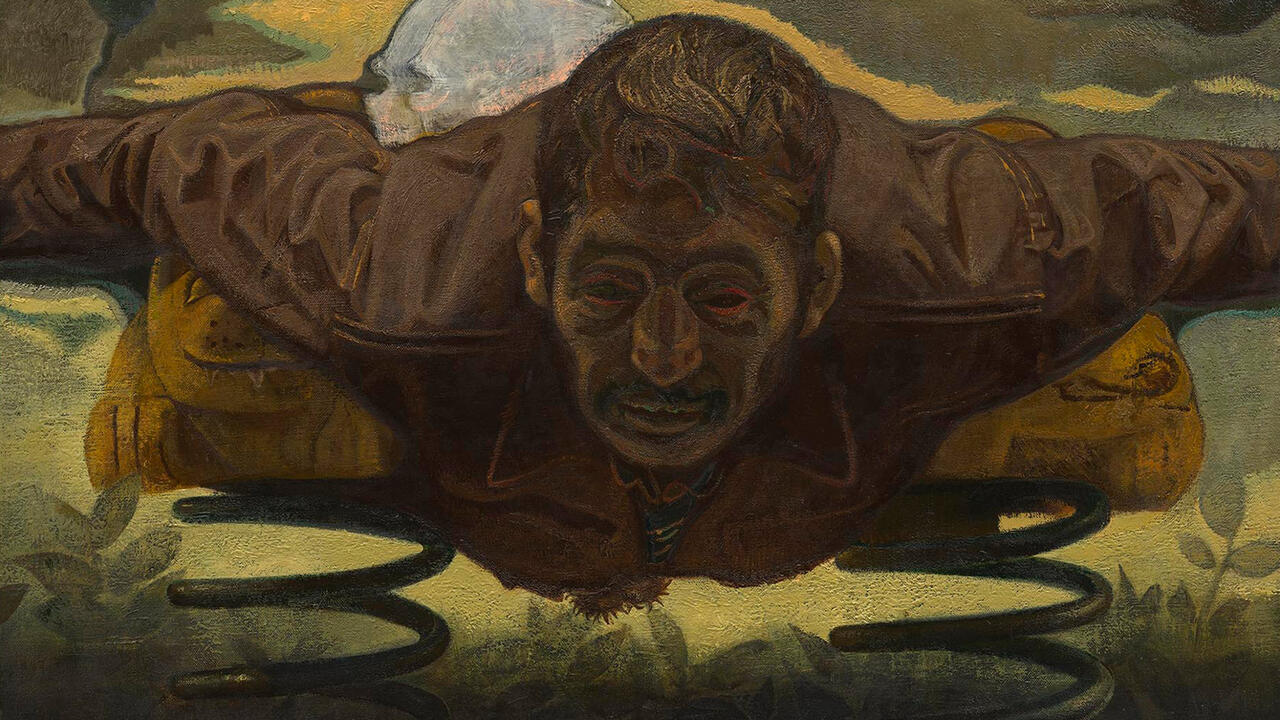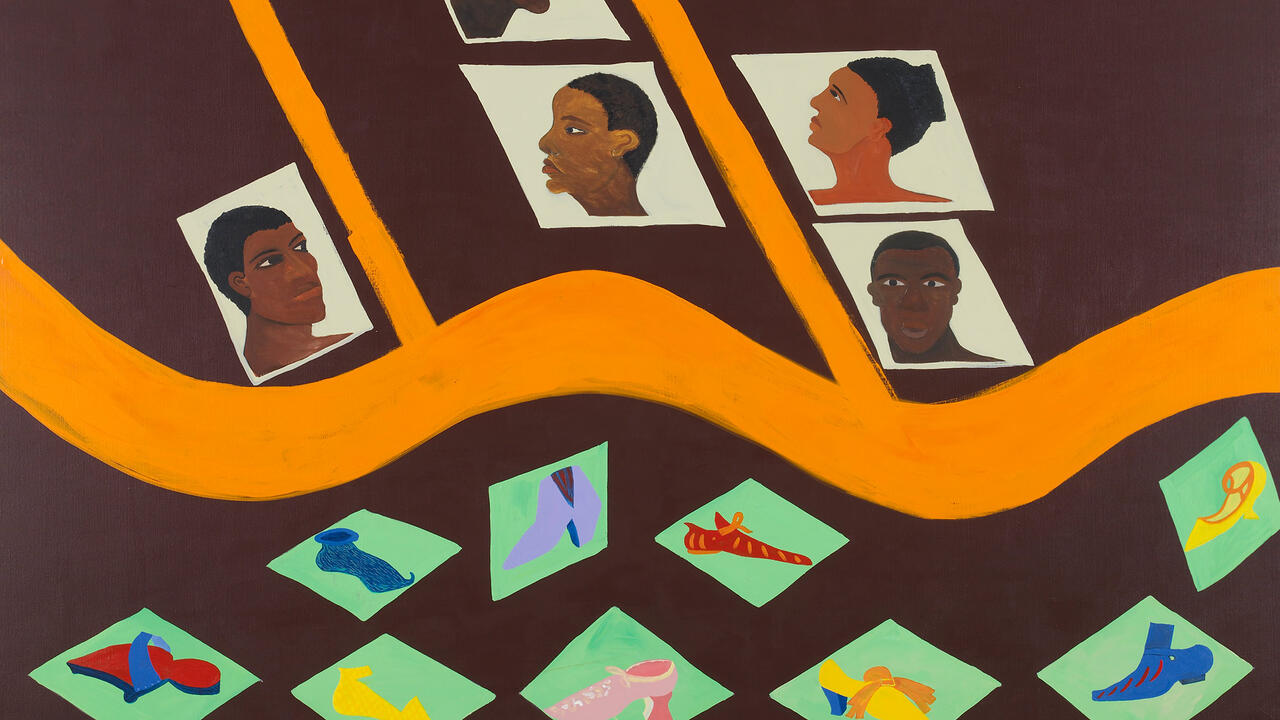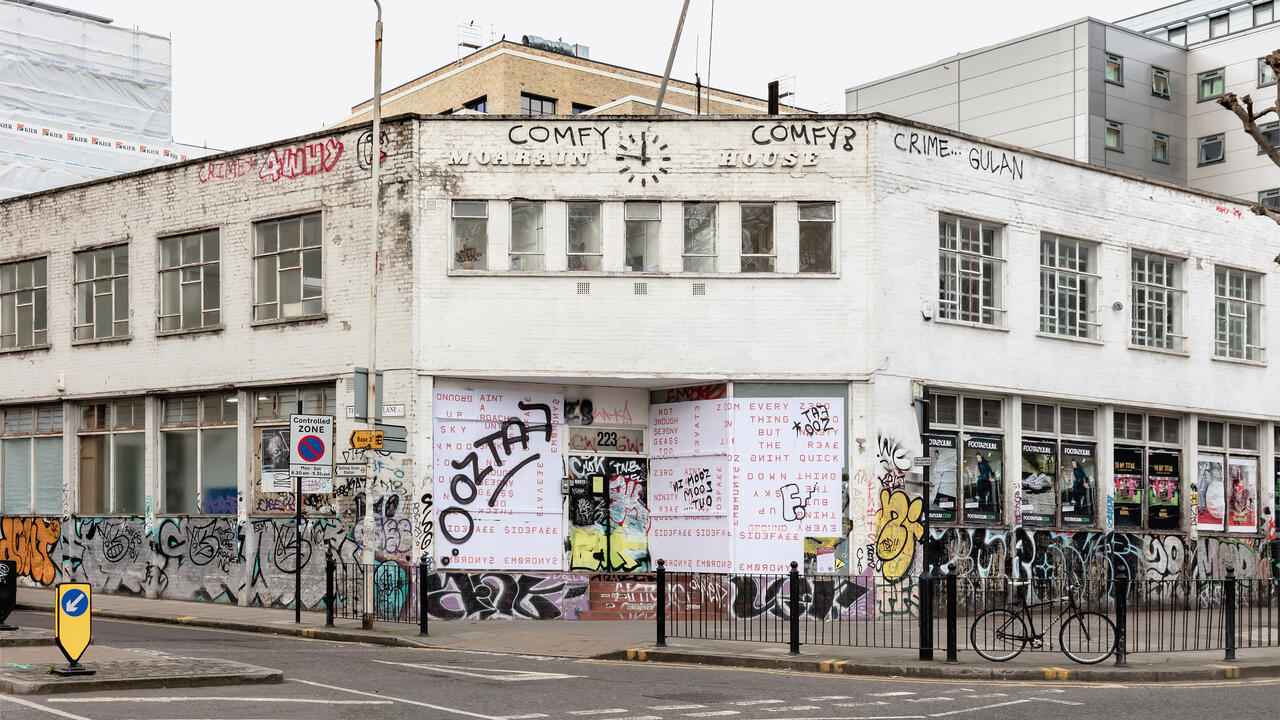Patrick Staff
Chisenhale Gallery, London, UK
Chisenhale Gallery, London, UK

The morning I visited the Chisenhale Gallery, the Guardian published an interview with the gay British actor Russell Tovey, in which he spoke proudly of avoiding growing-up effeminate, of being made by his father to ‘toughen up’ and of crediting body-building with restoring a sense of security after a homophobic attack. The response of a friend of mine over Twitter – ‘Get fucked Russell Tovey’ – was fairly representative of the reactions I read online that day. What felt to Tovey like empowerment seemed to other gay men like betrayal – his gym-honed body, unbeknownst to him, a battleground.
The subject of Patrick Staff’s 30-minute film The Foundation (2015) is the archive established in the one-time LA home of homoerotic artist Tom of Finland, whose drawings of pneumatically muscular, blissfully sexually confident beefcakes, made from the mid-1940s until the artist’s death in 1991, retain a formative place in gay iconography (and possibly to the ideal Tovey pursues). Despite a recent upswing of ‘high-brow’ critical interest in Finland’s art, which has been shown in exhibitions such as LA MOCA’s 2014 ‘Bob Mizer & Tom of Finland’ and the recently-closed ‘Early Work 1944 – 1972’ at David Kordansky Gallery (with a major survey at Artists Space in New York upcoming), Staff addresses its aesthetic afterlife only obliquely, instead approaching the foundation itself as a microcosm of queer social dynamics. Near the film’s start, during a posthumous birthday party for Finland, the foundation’s director invites guests to: ‘Treat this place as your community centre.’ These words are repeated in an ensuing sequence by an older, ursine man, who stands on a stage upon which he and Staff proceed to dance. The older man sports a metal chain, while Staff wears a leather harness over his bare, slim chest, striking a note of faint pathos – as though his body were pursuing a fantasy it wasn’t designed for. While their moves in this routine – all dead-eyed sass, hip-swaying and crotch-thrusting – are identical, neither one seems to lead, and the two figures don’t interact. I thought of the Roxy Music lyric about revellers: ‘All together all alone.’
The sequence is followed by bright, airy shots of a life-drawing class at the foundation, showing older and younger men hunched at their boards while the model himself remains unseen. (Or herself? It seems unlikely.) In the following shot, Staff stands docile, patches of ink on his skin, while his earlier dance partner poses his arms, hands and neck. The passage suggests that something is lost as well as gained when we learn to play along and to submit to another’s gaze. When, at one moment, Staff appears to be about to speak, for the first time, the camera cuts to the older man, who declares: ‘You’ll grow into it, being a man’ – as much a threat as reassurance. Later in the film, deteriorated VHS footage shows the crowd at some kind of Tom of Finland fetish convention. Dizzying close-ups pick out a man shaving another’s head, one unzipping his jean shorts, another taking to the stage in a gimp mask, as the convention’s background noise reaches a screeching climax. (Up to this point, the film’s soundtrack has mostly consisted of occasional Noh-like rattles.) Frankly, I found the scene a source of panic rather than pride – I could recognize the gathering of a community, for sure, but without feeling it had a place for me.
To quote Roxy Music again: ‘Loneliness is a crowded room.’ Staff’s film is all about rooms. Moving rhythmically between dark enclosures and brightly lit spaces, his crowded, decentred compositions, some footage of which was shot on iPhones, render the foundation’s physical structure as a procession of primal, affective spaces. Artists from Tom Burr to Richard Healey have explored the mapping of sexual identity onto interior space, but Staff breaks fresh ground by connecting the architectural metaphor to the specific problems of the group – evincing, to put it simply, that to be inside one room you have to be outside another, that including means excluding and that to identify is also, necessarily, to disidentify. As a queer, trans, male artist, Staff doesn’t decry that situation, but rather limns its movements. The film shows, with striking honesty and tact, how the stage is set. How will you dance?










